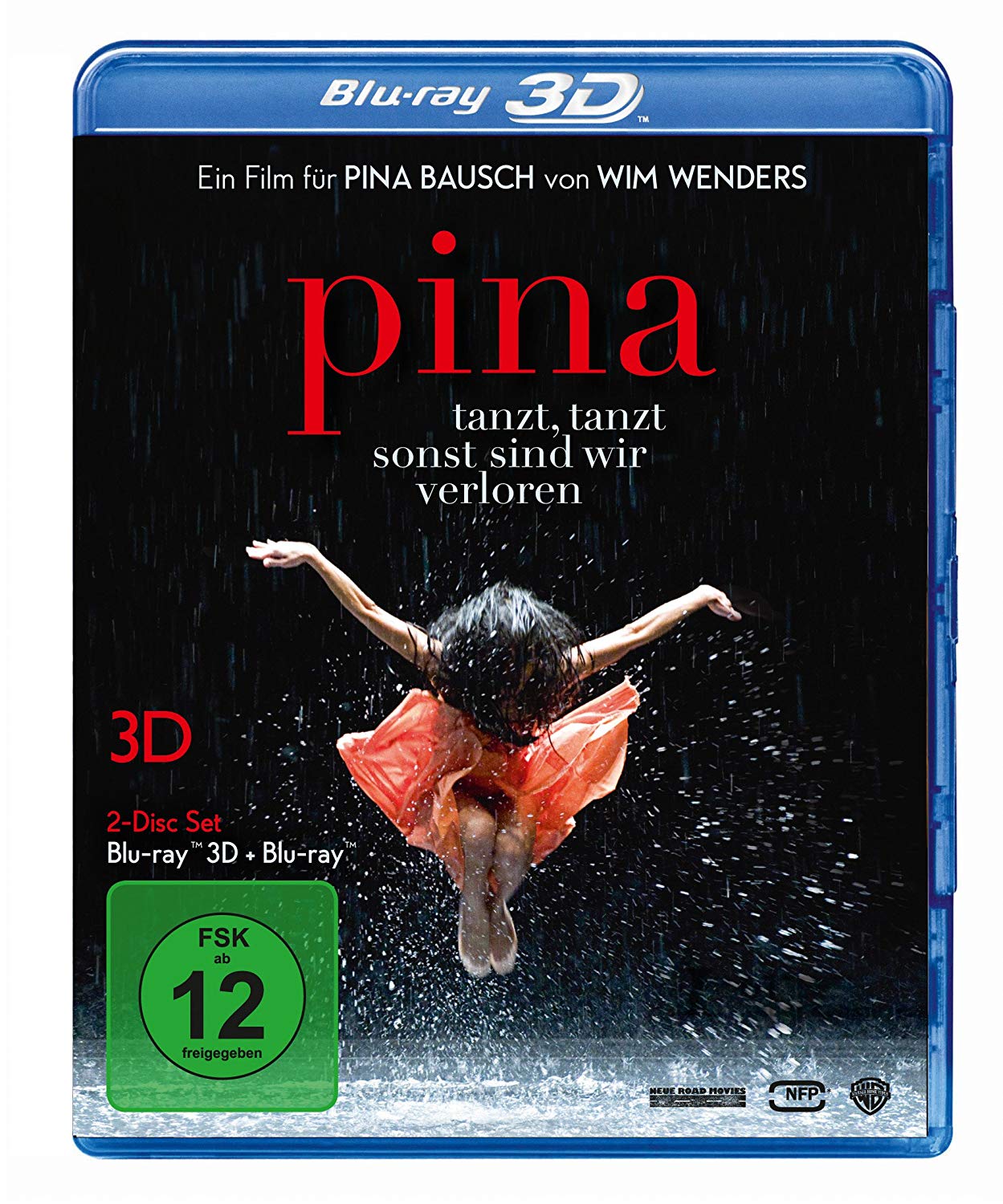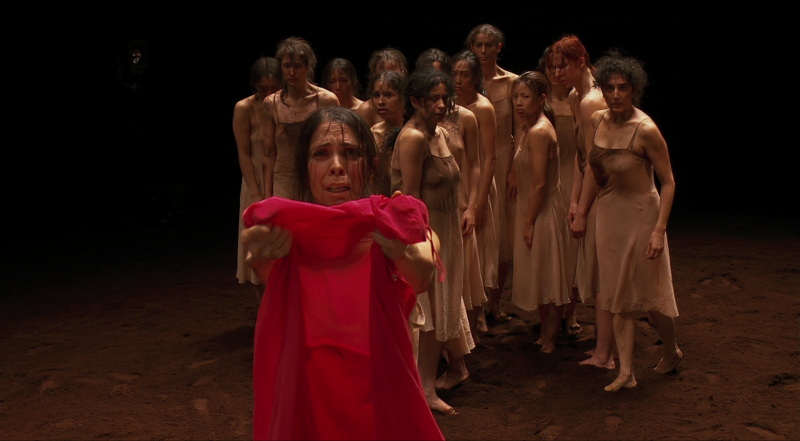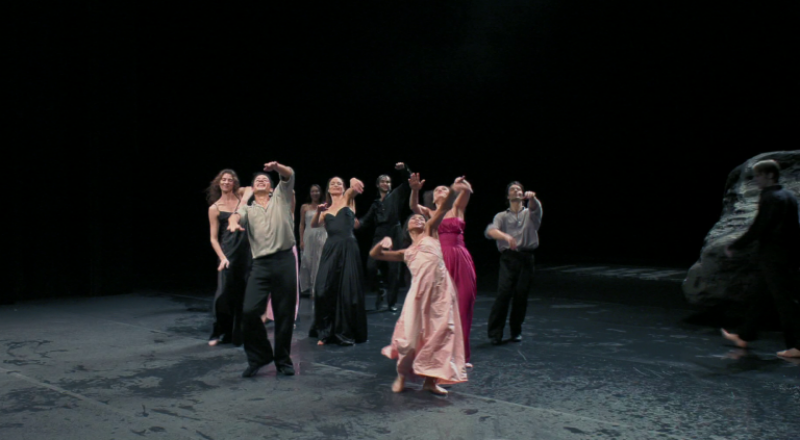Pina dance film by Wim Wenders. (We know, the title of this is "pina," but we will still use the capital letter "P.") This is a heavy-weight documentary about the choreography of Pina Bausch. The film includes recently commissioned segments of stage performances, original shooting of dancing on locations around Wuppertal, interviews with dancers who knew and worked with Bausch, and archival footage. The package has a 2D movie, a 3D movie + a "making of" extra. There has been massive confusion over the marketing of this title. (It is being sold like a movie; not like a ballet title.) It is available in German, French, Spanish, and Italian releases, all limited to Region B. There is also a Canadian version, a 3-disc box set (2D, 3D, and DVD), limited to Region A. This may be the best option for those living in the United States with Region A players. We have also learned that the Criterion Collection has also released this in the American market. Released 2012, discs have 5.1 dts-HD Master Audio sound. Grade: A
One of the very best fine-art HDVDs we have is the Pina Bausch Orpheus und Eurydike dance-opera from the Paris Opera Ballet. The Bausch Orpheus und Eurydike is a classical work presented in Pina's surreal style. Pina's more typical works, created and presented over decades at her Tanztheater Wuppertal in Germany, are more radical and iconoclastic. These radical works are what Wenders mainly treats in his film, which was made after Pina's death. The film has lengthy excerpts from Le Sacre du Printemps, Café Müller, and Kontakthof.
I first saw this in its 2D version, and I was content with it. Later I saw the 3D version. This film is much stronger in 3D than 2D. The 3D version is by far the best 3D title yet of any fine-arts subject, and it is the only such title we have now that I will in the future enthusiastically show to my family and friends.
This film was made from scratch by Wim Wenders, a famous movie director. Pina is now considered something of a national treasure and patron saint of artists in Germany. Wenders got significant cooperation and backing from his countrymen in making this. Everything (except a few archival clips) was shot in 3D. In addition to challenging dancing scenes in Pina's theater or in studios, Wenders used striking locations around Wuppertal. A fair amount of money was invested in the project. Using prototype and awkward 3D gear, Wenders got a final product showing terrific film-making craftsmanship throughout. There are no technical problems with this film that I can see.
Of course Winders includes some of the morose interviews every in memoriam film has to have. But mostly we see dancing—Pina style. This style (1) stresses the individuality of each dancer (2) occupies territory by spreading dancers out over large areas (as air abhors the vacuum), and (3) keeps your attention by allowing anything to happen any time. Our ability to cope with these style elements are enhanced significantly by 3D filming.
Individuality. There are few movie-like closeups in this film. Most of the time you see the whole body of several or many dancers. I was surprised to see that even when individual dancers are relatively far away, the 3D camera makes them look more vivid and real than is possible with 2D. As to the men, 3D lets me see more clearly their facial features and expressions, their postures and movements, and each muscle, bone, and ligament in their incredibly lean bodies. The same holds for the women, of course, plus I can see far more clearly than before the softness and curves that makes them different from the men.
Occupying Territory. Our depth perception (visual and aural) lets us observe locations. In the old days, we needed to keep track of every enemy warrior or hungry lion around. In our time these skills are deprecated. But when Pina Bausch puts her dancers out all over the place, our minds re-engage old talents so we can observe everything that takes place within sight or hearing. Well, seeing the scene in 3D makes it much easier for me to do this and gives me a feeling of comfort that I have everything under control.
Stay Awake! With Pina, you are going to be surprised. It takes energy to keep track of all the people on stage doing different things. I need all the help I can get, and 3D vision does a lot to help me stay on guard. For example, in 2D I didn't see in the Vollmond segment that two men in the background swim across the stage in water that somehow is present there. But in 3D, the swimmers are obvious.
I wouldn't dream of trying to discuss the meaning or content of Bausch's choreography. Perhaps there is no content beyond what I've hinted at above. But there is one "political" aspect of her work I'll mention: most dance companies retire their members at age 40 or so. But once you were part of Pina's company, you could apparently keep dancing as long as you could wiggle your toes. I know of no other choreographer who has shown such a keen interest in the abilities of older dancers.
Here are some screenshots from Pina. Below, the wild stage preparation is a Pina hallmark. Here 6 huge boxes of special dirt are spread on the stage for The Rite of Spring. Pina's most famous stunt of this type was probably her Nelken (Carnations) stage covered with thousands of, well, carnations.
All the girls get down and dirty in this one. The red cloth is a dress you don't want to wear.
The lucky girl. But we don't get to see what happens to her. Let's hope this Rite of Spring will one day be available complete in HDVD.
Pina liked to draw on street life and used real people with all their oddities. This segment turns out to be a delicate solo to ultra-romantic music from Tchaikovsky's “Pathétique” Symphony. But it starts with a frumpy housewife at an abandoned steel mill showing what will be tonight's Wienerschnitzel.
Another Pina event—there are many vignettes of this nature in the film.
Pina grew up playing in her father's cafe. Strange things she experienced there inspired the creation of Café Müller.
In this scene, the man drops the woman over and over in an endless loop of frustration.
This is an old shot of Pina herself dancing in Café Müller.
A few moments later. Watching this clip reminds me of that old black and white film of Maria Callas singing Tosca. You have to see this to understand how expressive a dancer can be.
Now we are moving on to Vollmond (Full Moon). This is the "Joy" segment created by a cast member and adopted by Pina.
Get ready!
Go!
It's raining. But I'm on a rock on a stage!
And a river runs through it!
Fire for effect!
One of the cohorts in Kontacthof, where young and old can meet on their feet.
But don't get too excited!
These screenshots can only give you a suggestion as to the antics of the dancers in Pinaland. So if you have the slightest interest in modern dance, you have to watch this, at least in 2D. Having seen Pina in 2D and 3D, I doubt that I will watch it in 2D again. 3D has real advantages for dance films, and Wenders somehow manages to avoid or make up for the loss of illumination that troubles current 3D generally. So for this material, 3D is superior to 2D right now. I will give this film the grade of A. If you have any specific interest in modern dance, this will be an A+ title for you.
Update June 2020. This review was written about 7 years ago when 3D was the latest thing. I have since upgraded all the gear I had back then, and 3D is dead. I don’t even have the special glasses any more. 3D could maybe come back one day, but all the gear needed to make it happen will have to be simplified and made much cheaper to buy and use than before.

















